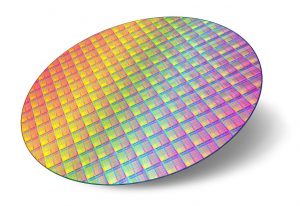The sputtering target materials can be divided into metal target (pure metal gold, aluminum, titanium, etc.), alloy target (aluminum-scandium alloy, cobalt-aluminum alloy, aluminum-titanium alloy, etc.) and ceramic compound target (oxides, nitride, silicides, etc.) according to their different chemical compositions; when it comes to different application fields, it can be categorized into semiconductor target, planar display target, solar cell target, and other target materials. Anelva target refers to the sputtering target used in semiconductor industry.
Although the proportion of Anelva target is just about 3% among all the sputtering targets, it cannot be denied that its application in semiconductor chip market is important and irreplaceable. There are generally two kinds of Anelva target: wafer materials and packaging materials. Today we mainly focus on wafer manufacturing materials because they have relatively high technical barriers than the other.
The inner part of the semiconductor is composed of tens of thousands of meters of metal wiring, and the sputtering target material is the key consumption material for making these wiring. In other words, the Anelva target is the core of semiconductor wafer manufacturing. Since the chip is elaborate, it has high requirements for sputtering target material used in the manufacturing process. Generally, the purity of the target material is over 99.999%.
Semiconductor wafers are the basic material for manufacturing chips (as shown below). It is small but complicated. The production of wafer mainly involves 7 kinds of semiconductor materials and chemicals. The most important raw material for semiconductor integrated circuits is silicon, which is widely found in rocks and gravel in the form of silicate or silicon dioxide in nature. The manufacturing process of silicon wafers can be divided into three basic steps: silicon purification, monocrystalline silicon growth, and wafer formation. Apart from silicon, the manufacturing process of 200mm (8-inch) and below wafers is usually mainly made of aluminum, and the manufacture of 300mm (12-inch) wafer mostly uses advanced copper interconnection technology.

In conclusion, with more extensive use of semiconductor chips, the demand for aluminum, titanium, tantalum and copper, the four mainstream Anelva target, will also increase. There is currently no alternative to these target materials, either technically or economically, so, as I mentioned before, they are important and irreplaceable.
Please visit https://www.sputtertargets.net/ for more information.
